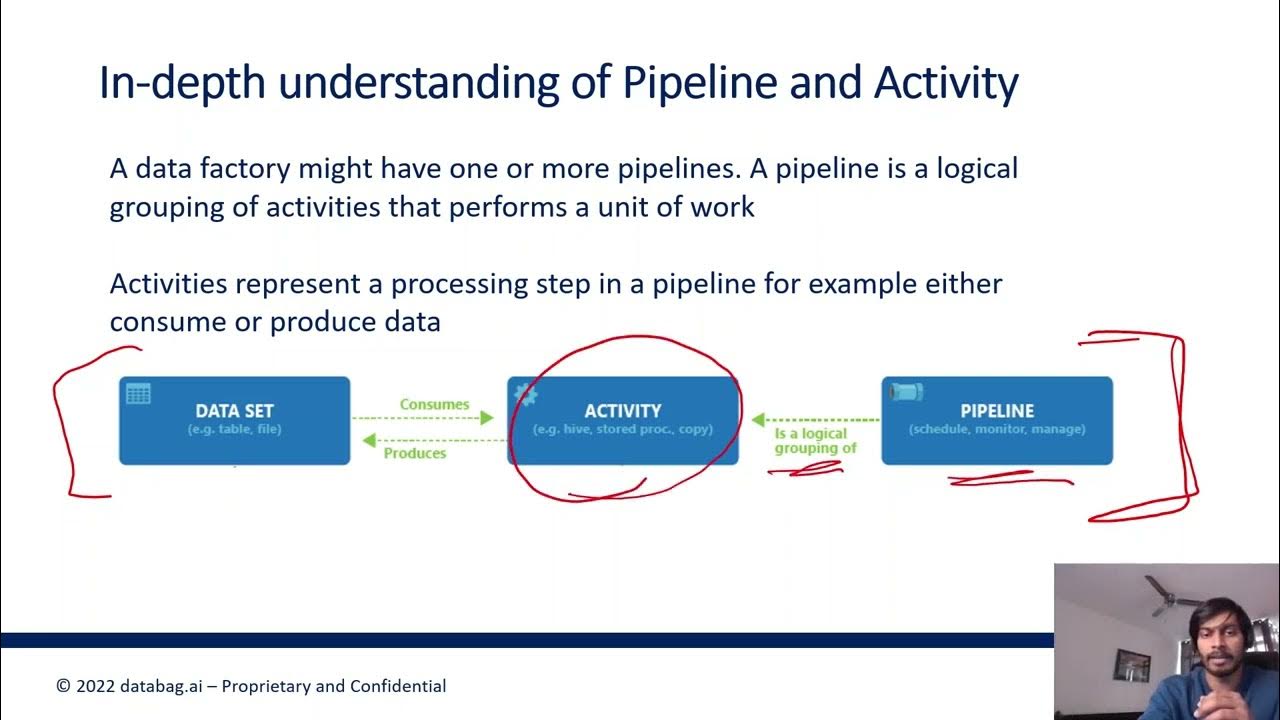What Is A Data Pipeline - Data Engineering 101 (FT. Alexey from @DataTalksClub )
Summary
TLDRIn this informative video, Ben Rogan, the Seattle data guy, explores the concept of data pipelines. He discusses various definitions from fellow data engineers and explains the process as a series of data inputs, transformations, and outputs. Rogan covers different types of pipelines, including integration, batch, streaming, and Reverse ETL, and emphasizes the importance of choosing the right tools like Luigi, Airflow, and ADF for specific needs. He stresses the role of data engineers as 'data plumbers' and the challenges of maintaining data quality and reliability throughout the pipeline lifecycle. The video concludes by highlighting the ongoing demand for data engineers to manage and maintain these crucial data flows.
Takeaways
- 😀 A data pipeline is a process where data comes in, is transformed or processed, and then goes out to another system or destination.
- 👷♂️ Data engineers are often referred to as 'data plumbers' because they are responsible for moving data from one place to another in a structured manner.
- 🛠️ There are various tools used for data pipelines, including Luigi, Airflow, and ADF, which can be chosen based on the specific needs of the pipeline such as batch processing or streaming.
- 🔍 Different types of data pipelines exist, such as integration pipelines for operational use cases, batch pipelines often associated with ETL or ELT, streaming data pipelines, and Reverse ETL.
- 🤔 When building a data pipeline, important questions to ask include the frequency of data updates, the need for change data capture, and any service level agreements (SLAs) regarding data availability.
- 🛑 Data pipelines are not flawless and can break for various reasons, often due to upstream changes in data that affect downstream processes.
- 🔍 Data observability and testing are crucial to catch silent or intermittent failures in data pipelines that could lead to incorrect data being used in decision-making.
- 🛠️ Maintenance is a significant aspect of data pipelines, ensuring that they not only move data from point A to B but also maintain data quality and reliability over time.
- 📈 The importance of data pipelines is growing as the demand for data increases, making data quality and reliability more critical for business operations.
- 🔧 Tools and platforms are evolving, with some services like Stripe and Salesforce allowing direct integrations, which may change the landscape of data pipelines in the future.
- 👋 The video concludes by emphasizing the ongoing need for data engineers to manage and maintain the complex ecosystem of data pipelines.
Q & A
What is the common misconception about data pipelines according to Ben Rogan?
-The common misconception is that a data pipeline is anything people outside of your team message you about if it's broken, implying that data engineers are responsible for any issues that arise.
What is a simple definition of a data pipeline according to the responses from other data engineers?
-A data pipeline can be defined as a process where data comes in, something happens to the data inside the pipeline, and then the data goes out.
What is the analogy used to describe a data pipeline in the script?
-The analogy used is a box or a square where something goes in, something happens inside, and then something comes off, representing the input, processing, and output stages of a data pipeline.
What term did Ben Rogan first hear in relation to data pipelines?
-Ben Rogan first heard the term 'Integrations' in relation to data pipelines, specifically with the tool SSIS (SQL Server Integration Services).
What are the different types of data pipelines mentioned in the script?
-The different types of data pipelines mentioned are integration data pipelines, traditional batch pipelines (ETL or ELT), streaming data pipelines, and Reverse ETL.
What is the role of a data engineer in the context of data pipelines?
-Data engineers are often referred to as 'data plumbers' because they are responsible for getting data from point A to point B in a clear and efficient manner.
What are some of the tools mentioned for building data pipelines?
-Some of the tools mentioned for building data pipelines include Luigi, Airflow, Perfect, ADF (Azure Data Factory), Matillion, and DBT (Data Build Tool).
What are some questions data engineers might ask a business person when building a data pipeline?
-Data engineers might ask about the number of tables involved, the need for change data capture, the frequency of data updates, any SLAs (Service Level Agreements) related to data availability, and the purpose of the data once it reaches its destination.
Why is data quality and reliability important in data pipelines?
-Data quality and reliability are important because they ensure that the data is accurate and consistent throughout the pipeline, which is crucial for making informed decisions and maintaining the integrity of the data.
What are some challenges faced when maintaining data pipelines?
-Challenges include dealing with upstream changes that can break pipelines, silent or intermittent failures that are hard to detect, and ensuring that data contracts and logic remain valid over time.
How does the script suggest that data pipelines might evolve in the future?
-The script suggests that data pipelines might evolve with direct integrations from services like Stripe and Salesforce, potentially reducing the need for complex data plumbing.
Outlines

This section is available to paid users only. Please upgrade to access this part.
Upgrade NowMindmap

This section is available to paid users only. Please upgrade to access this part.
Upgrade NowKeywords

This section is available to paid users only. Please upgrade to access this part.
Upgrade NowHighlights

This section is available to paid users only. Please upgrade to access this part.
Upgrade NowTranscripts

This section is available to paid users only. Please upgrade to access this part.
Upgrade NowBrowse More Related Video
5.0 / 5 (0 votes)





